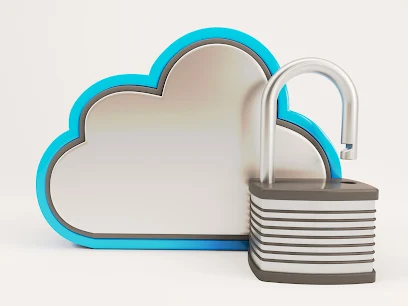What is Ransomware?
Ransomware is a type of malware that locks or encrypts a victim's files or entire system. The attacker then demands a ransom payment, usually in cryptocurrency, in exchange for a decryption key or to regain access to the system. It’s like a digital hostage situation where your data is the hostage, and the criminal wants money to release it. These attacks have affected individuals, small businesses, hospitals, schools, and even government agencies.
How Ransomware Works
The attack usually starts when a user clicks on a malicious link or opens an infected attachment in an email. In some cases, the malware can spread through software vulnerabilities or weak security settings. Once inside the system, ransomware quickly gets to work—encrypting files, changing file names, and sometimes locking the user out of the entire system. A ransom note appears, giving instructions on how to pay and warning that files will be lost if payment isn’t made in time.
Types of Ransomware
There are several types of ransomware, each working in slightly different ways. Crypto ransomware encrypts your files and demands payment for the key to unlock them. Locker ransomware locks your entire device, making it impossible to use. Scareware shows fake alerts claiming your device is infected and tricks you into paying for fake antivirus software. Double extortion ransomware not only encrypts files but also steals them, threatening to leak the data if you don’t pay.
How Ransomware Spreads
Email phishing is the most common way ransomware spreads. Attackers send messages that look like they’re from a trusted source, asking you to click a link or open an attachment. Once clicked, the malware is activated. Ransomware can also spread through malicious websites, pop-up ads, or through unsecured remote desktop protocols. In some cases, attackers exploit outdated software or weak passwords to gain access to systems directly.
Who Are the Targets?
Ransomware doesn’t discriminate. Individuals, small businesses, large corporations, and even government bodies have all been victims. Small and mid-sized businesses are often targeted because they tend to have fewer security resources. Healthcare facilities are also frequent targets because they handle sensitive data and need immediate access to systems, making them more likely to pay quickly.
What Do Attackers Want?
The goal is simple—money. Most attackers demand payment in cryptocurrency because it’s harder to trace. Some may ask for thousands of dollars, while others demand millions, depending on the target’s size and importance. In some cases, attackers threaten to publish the stolen data online if the ransom isn’t paid, adding pressure to the victim.
Should You Pay the Ransom?
Most cybersecurity experts strongly advise against paying the ransom. There’s no guarantee the attacker will actually unlock your files or system after payment. Paying also encourages the criminals to keep doing it. Instead, focus on restoring from backups and reporting the incident to authorities. That said, some organizations in desperate situations may feel they have no choice—especially if lives or critical services are at risk.
Signs of a Ransomware Attack
Knowing the early warning signs can help reduce damage. These signs include files being renamed with strange extensions, your system running slowly, losing access to files, or getting locked out of your device entirely. A ransom note usually appears either on-screen or in folders where your files used to be.
How to Protect Yourself from Ransomware
The good news is, ransomware can be prevented with the right steps. Always keep your software, systems, and antivirus tools updated. Back up your data regularly to an offline or cloud location so you can restore files without paying a ransom. Avoid clicking on unknown links or downloading files from unknown sources. Train employees to spot phishing attempts and practice good credential hygiene. Limit user permissions and close any unnecessary remote access points.
What to Do If You're Attacked
If you’re hit with ransomware, disconnect the infected device from the network immediately to stop it from spreading. Don’t restart your system—that could make things worse. Contact your IT or cybersecurity provider right away. Report the attack to your local law enforcement or cybercrime unit. If you have backups, work on restoring your data after the threat is removed. If no backup exists, recovery becomes more difficult, so prevention and preparedness are critical.
Final Thoughts
Ransomware is one of the most dangerous cyber threats today. It’s fast, disruptive, and expensive. But with strong security practices, regular backups, and awareness, it’s possible to stay one step ahead. Whether you're an individual or a business, staying alert and prepared is the best defense against losing access to your valuable data. Don’t wait for an attack to take action—start securing your systems now.





No comments:
Post a Comment